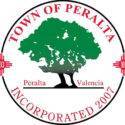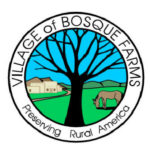It’s February, again. I’m feeling a bit of deja vu, didn’t we just reflect on the wonder of seeds?

Lynda Garvin
Are you looking at this year’s newly-arrived seed catalogs and planning the delicacies for your 2022 vegetable and flower gardens? If you are an avid vegetable gardener, you’ve already bought your seeds and have hundreds of seedlings growing indoors for your cool season spring and warm season vegetables. You may also have packets of seeds lovingly watched, harvested, cleaned, and stored in preparation for this years’ planting. It can be said all gardeners are perpetual optimists.
Every seed planted is an act of trust. If you are new to the art and science of vegetable gardening and haven’t done anything yet, don’t worry, there’s still time. A good starting point is what do you and your family like to eat? Will it grow here? Does it germinate best in cool soil or does it need warm soil temperatures, like the heat loving chile and tomato?
If this seems overwhelming, start with a list of vegetables you’d like to eat and want to grow this year. Here comes the fun part — finding your seeds. If you don’t have room, equipment or the desire to start seeds indoors this year, there are many cool season vegetables you can directly seed outside. They like cool soil temperatures to germinate. They can also be planted in late summer for fall and early winter harvests. You can plant spinach, leaf lettuce, onions, peas, carrots, kale, chard and collards now.
In March, you can plant asparagus crowns, a perennial that keeps giving every year, lima, fava and garbanzo beans, beets, radish, broccoli, cabbage, and turnips. Fast and easy starter vegetables are leafy greens that can be planted in containers for care and harvesting.
If you need more information on how to prepare your soil and planting, refer to “Home Vegetable Gardening in New Mexico,” aces.nmsu.edu/pubs/_circulars/CR457.pdf.
Now is the time to learn about starting your seeds indoors for those early, cool and warm-season crops such as broccoli, Swiss chard, collards, tomato, hot and sweet peppers. Starting seeds indoors gives your plants a head start in the garden when the weather is right and increases their chances of bearing fruit and leaves early in the season. A good resource is NMSU’s publication “Seed Propagation of Plants” at aces.nmsu.edu/pubs/_h/H112/welcome.html. Also check out NMSU’s publication CR 457-B “Growing Zones, Recommended Crop Varieties, and Planting and Harvesting Information for Home Vegetable Gardens in New Mexico” at aces.nmsu.edu/pubs/_circulars/CR457B/welcome.html.
Not only does it have great information on when to start seeds indoors, it also tells you the best time to plant seeds or transplants outside, recommended vegetable varieties for your area, how to plant, and how much you can expect to harvest.
Most of Valencia County is in Growing Area 2 with an average last frost from April 20 to May 10 and 150 to 180 growing days. If you’re more of an active learner and want a class on seed starting, you can watch a video on the Desert Blooms Website from the “Ready, Set, Grow!” monthly gardening series.
The February class “Starting Seeds Indoors,” has the video, as well as downloadable presentation slides, and other recommended readings on seed starting. The link is desertblooms.nmsu.edu/ready-set-grow.html.
Upcoming live classes include, Feb 16: “Pruning Galore” with Dr. Marisa Thompson, NMSU Extension Urban Horticulture Specialist; and at 3 p.m., March 16: “Spring Veggie Gardening” with John Garlisch, Bernalillo County Agriculture and Natural Resources agent.
If you want more information on growing your own vegetables, consider enrolling in the “Seed to Supper” program. It is free and online to people in New Mexico. Learn how to grow your own food with self-paced gardening lessons at ican.nmsu.edu/seedtosupper.html.
Lesson topics include garden planning, soil preparation, garden care, harvest and storage. The course also has live question and answer sessions on various topics with NMSU agents and specialists.
Are you curious about the hardiness zones listed on the seed packets? The hardiness zone is an average of the first and last freeze dates for an area. For most of the county that is 7a. You can look up your hardiness zone by zip code at planthardiness.ars.usda.gov/PHZMWeb/Default.aspx. Happy gardening!















